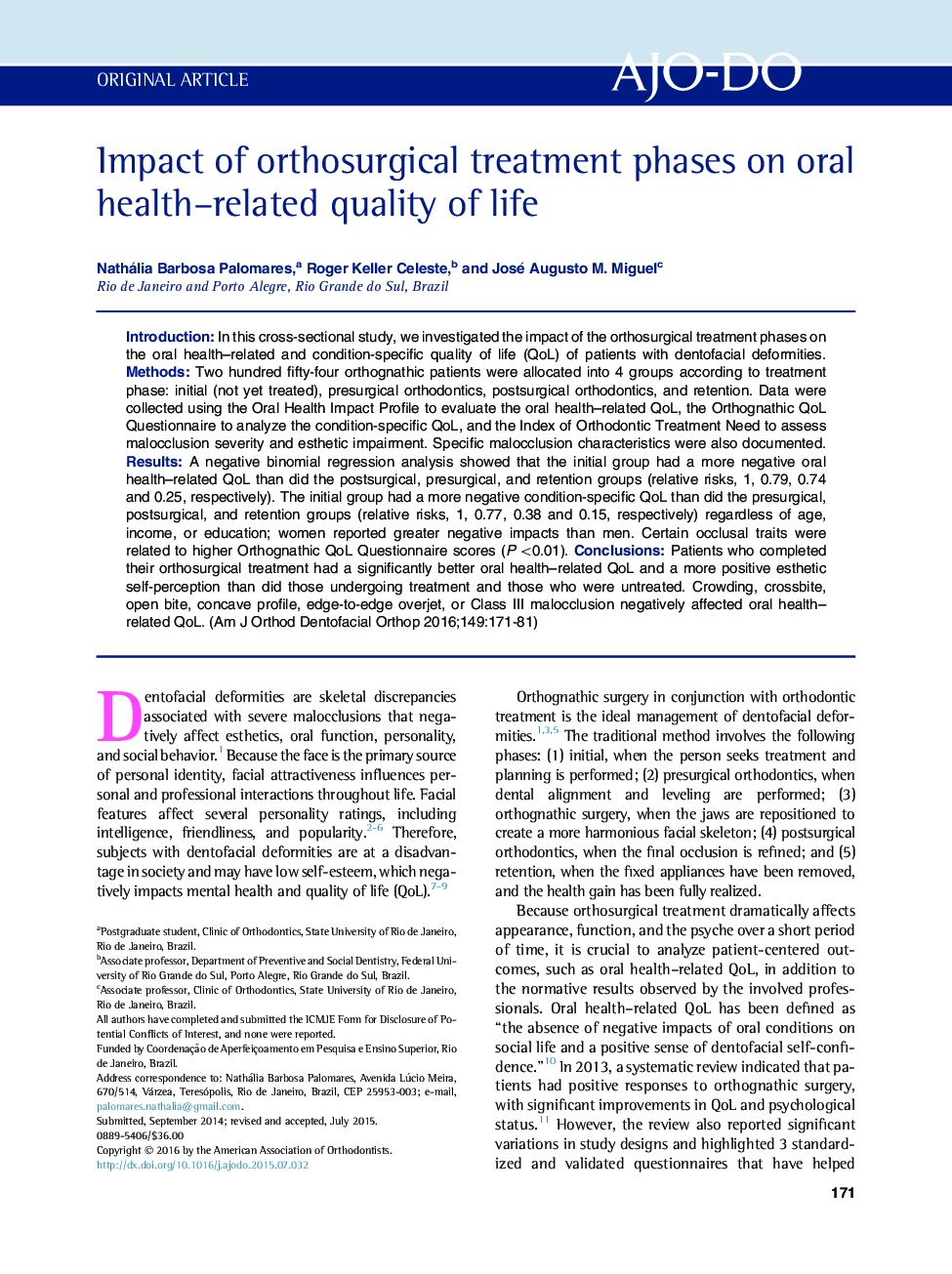| Article ID | Journal | Published Year | Pages | File Type |
|---|---|---|---|---|
| 3115716 | American Journal of Orthodontics and Dentofacial Orthopedics | 2016 | 11 Pages |
•Oral health–related QoL and condition-specific QoL are diversely affected by orthosurgical treatment.•The retention phase is more positive than the postsurgical, presurgical, and initial phases.•Women had worse impacts related to a dentofacial deformity than did men.•Presurgical patients showed less esthetic impairment than did untreated subjects.•Some specific occlusal traits were related to higher OQLQ scores.
IntroductionIn this cross-sectional study, we investigated the impact of the orthosurgical treatment phases on the oral health–related and condition-specific quality of life (QoL) of patients with dentofacial deformities.MethodsTwo hundred fifty-four orthognathic patients were allocated into 4 groups according to treatment phase: initial (not yet treated), presurgical orthodontics, postsurgical orthodontics, and retention. Data were collected using the Oral Health Impact Profile to evaluate the oral health–related QoL, the Orthognathic QoL Questionnaire to analyze the condition-specific QoL, and the Index of Orthodontic Treatment Need to assess malocclusion severity and esthetic impairment. Specific malocclusion characteristics were also documented.ResultsA negative binomial regression analysis showed that the initial group had a more negative oral health–related QoL than did the postsurgical, presurgical, and retention groups (relative risks, 1, 0.79, 0.74 and 0.25, respectively). The initial group had a more negative condition-specific QoL than did the presurgical, postsurgical, and retention groups (relative risks, 1, 0.77, 0.38 and 0.15, respectively) regardless of age, income, or education; women reported greater negative impacts than men. Certain occlusal traits were related to higher Orthognathic QoL Questionnaire scores (P <0.01).ConclusionsPatients who completed their orthosurgical treatment had a significantly better oral health–related QoL and a more positive esthetic self-perception than did those undergoing treatment and those who were untreated. Crowding, crossbite, open bite, concave profile, edge-to-edge overjet, or Class III malocclusion negatively affected oral health–related QoL.
Graphical abstractFigure optionsDownload full-size imageDownload high-quality image (177 K)Download as PowerPoint slide
